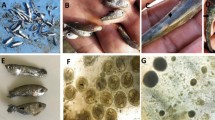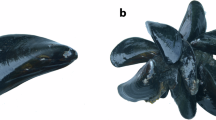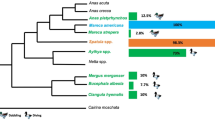Abstract
THE asexual generation of the trematode Cryptocotyle lingua Creplin is passed in the winkle, Littorina littorea L. A miracidium, hatching from a single egg of which many thousands are laid, gives rise to rediæ which feed upon the tissues of the host, and in their turn liberate free swimming cercariæ. In 1935, we collected a large winkle infected with this parasite, and kept it in a fingerbowl of sea-water for five years. During the first week in captivity the winkle, living on a diet of Ulva, emitted an average of 3,300 cercarise a day, reaching a grand total of approximately 1,300,000 in the first year. Cercariæ have emerged constantly ever since, although there has been a gradual decrease in numbers, so that during August 1940 the mean has fallen to a mere 830 per day. Although at the time of capture the winkle was the largest specimen among hundreds collected, and despite the drain on its constitution, it has since increased its shell size by 3½ mm.
This is a preview of subscription content, access via your institution
Access options
Subscribe to this journal
Receive 51 print issues and online access
$199.00 per year
only $3.90 per issue
Buy this article
- Purchase on SpringerLink
- Instant access to full article PDF
Prices may be subject to local taxes which are calculated during checkout
Similar content being viewed by others
Author information
Authors and Affiliations
Rights and permissions
About this article
Cite this article
MEYERHOF, E., ROTHSCHILD, M. A Prolific Trematode. Nature 146, 367–368 (1940). https://doi.org/10.1038/146367b0
Issue date:
DOI: https://doi.org/10.1038/146367b0
This article is cited by
-
Physiological ecology of the clonal corallimorpharian Corynactis californica
Marine Biology (2007)



